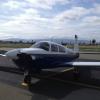cost changes in general aviation
-
Members Online
- ericrynehess
- ArtVandelay
- Elijah
- phxcobraz
- kortopates
- Mooney-Shiner
- wburger1
- Fly Boomer
- TCC
- IvanP
- MikeOH
- BillyT0020
- Pinecone
- eman1200
- MatthiasArnold
- Marc_B
- kaba
- Planegary
- The Other Red Baron
- PeteMc
- Hyett6420
- Graf_Aviator
- joepilotmooney
- Surefly
- bcg
- Hank
- Ibra
- natdm
- mhrivnak
- Sean
- dominikos
- Grant_Waite
- neilpilot
- Rmfriday
- Rocket_Driver
- Brian2034
- Flyler
- FlyLateNLife
- Florian Guthardt
- McMooney
- EricJ
- 201Steve
- BlueSky247
- MarkC
- flewmanchu
- jeff s
- mike_elliott


Recommended Posts
Join the conversation
You can post now and register later. If you have an account, sign in now to post with your account.